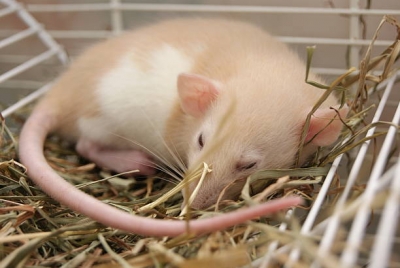
Rats may dream of where they plan to go tomorrow, suggests new research from University College London. The rats were shown a food treat that they could see but not get to, and then were encouraged to sleep in a cosy nest while their brain activity was monitored. The neurons representing the route to the food in their brains fired as they sleep, suggesting that they were dreaming about running down the path to the treat.
“It’s like looking at a holiday brochure for Greece the day before you go – that night you might dream about the pictures,” says Hugo Spiers of University College London.
Does a bigger brain automatically equal greater intelligence? In guppies, females with larger brains appear to be better survivors and have greater cognitive abilities than counterparts with smaller brains. Researchers from UCL, Stockholm University and Helsinki University have identified one single gene that directly influenced brain size, much to their surprise.
Judith Mank from UCL Biosciences, said, “We were surprised to see that only a single gene was up-regulated in the large-brained guppies. Given the complexity of the brain, we expected that the genetics would be very intricate, but this suggests that changes in brain size are underpinned by relatively simple genetic mechanisms.”
Blood pressure drugs that also create plasticity in the brain could be used to treat addiction, according to new studies in rats.
Researchers from the University of Texas found that isradipine, a drug which is currently on the market for the treatment of high blood pressure, erased all memory of addiction-triggering cues in rats previously addicted to cocaine and alcohol.
Male and female mice process pain differently which could have implications for how chronic pain is treated in humans. The study looked at immune cells called microglia which help kick the feeling of pain into gear and regulate how severe the pain is, depending on the type of injury. It showed that microglia play a more important role in the processing of pain for male mice than for female mice. Some drugs that aim at relieving pain, target the microglia, but the study shows that this relief is only visible in male mice. This study suggests that a crucial biological process is being governed in an entirely different way in males and females and more often than not, medications and treatments are being tested on male mice, not female mice.
Credit : Google
Picture Credit : Google

